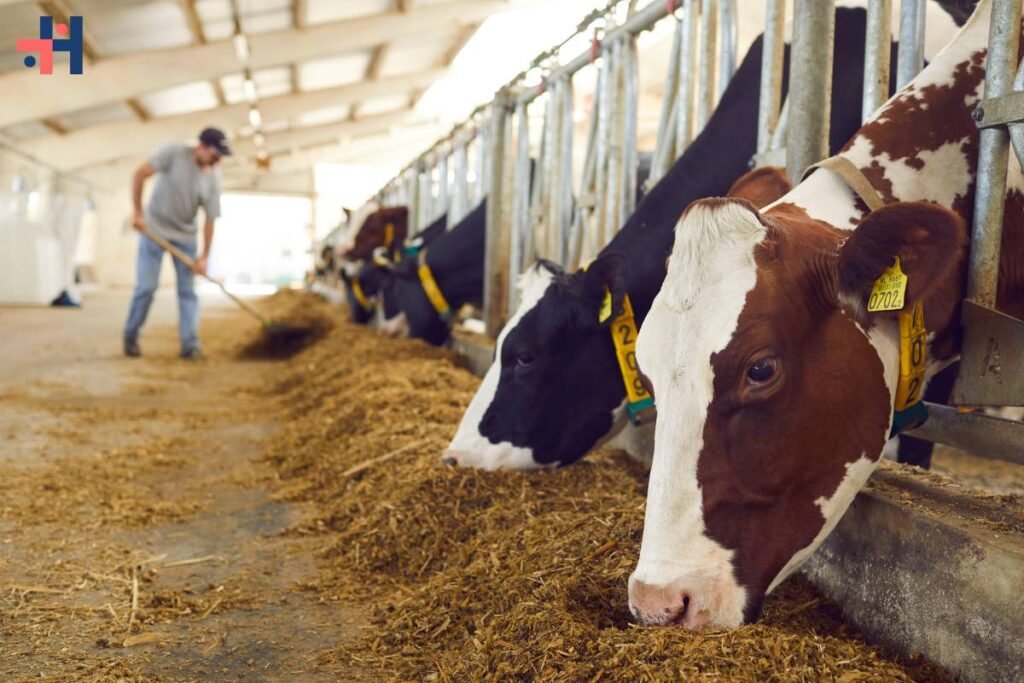Many U.S. dairy farms have yet to enhance health protective gear for employees amid a bird flu outbreak affecting cattle. Workers, activists, and farmers report insufficient measures, raising concerns among health experts about the potential for increased human infections from a virus with pandemic potential.
Epidemiologists fear the virus could spread and cause serious illnesses as farmers downplay the risks to workers, many of whom are unaware of the cattle cases in the U.S. The U.S. government announced on Wednesday that a second dairy worker had contracted bird flu since cattle first tested positive in late March. Investigators are examining whether the worker had access to or was wearing protective Gear.
Varied Health Protections across Dairy Farms
With nearly 24,000 farms selling milk across the country, health protections for staff vary widely. The National Milk Producers Federation, a lobby group, has encouraged farms to use protective Gear in line with federal recommendations and reports an increase in worker protections. However, dairy workers, activists, and legal advocates told Reuters that many farm owners have not provided essential gear like face shields and goggles, even though employees often work long hours in close proximity to cows.
Three large dairy companies, each managing tens of thousands of cows, declined to comment on their safety procedures. Workers based in New York, a major dairy producer, reported learning about the new illness affecting cattle through the media or community organizers rather than their employers. Luis Jimenez, a 39-year-old worker from Mexico, stated that no new precautions had been taken on his farm. “They’re not doing anything,” he said.
CDC Recommendations and State Responses
In April and May, the U.S. Centers for Disease Control and Prevention (CDC) advised workers to use personal protective equipment (PPE) if exposed to sick livestock. Following a Texas dairy worker testing positive for bird flu, the CDC urged states to make PPE available to workers.
Nirav Shah, the CDC’s principal deputy director, emphasized the importance of ensuring all farm workers have access to PPE. New York state is still evaluating the CDC’s recommendation and has not yet distributed equipment. Texas, New Mexico, and Colorado, where cattle were infected, have provided PPE to eight dairies combined. Meanwhile, Kansas, Idaho, and Wisconsin have PPE available, though no farmers have requested it.
Michigan, where the second dairy worker tested positive, reported that many farms have protective gear, and the state is coordinating efforts to supply more as needed. Awareness of bird flu’s risks increased in late April after the U.S. government mandated negative test results for cows crossing state lines, according to Emily Yeiser Stepp from the National Milk Producers Federation. However, reaching rural networks with these recommendations remains a challenge.
Close Contact with Cows
The U.S. has confirmed bird flu in dairy cattle in nine states. Scientists believe the outbreak may be more widespread, with H5N1 particles found in approximately 20% of retail milk samples. Bird flu can cause serious or fatal infections among people in close contact with wild birds or poultry. In cows, the U.S. Department of Agriculture suggests that unpasteurized milk is the primary vector for virus transmission, though the exact spread mechanism remains unclear.
Health experts recommend that dairy workers wear gloves and disposable coveralls to protect against milk splashes. However, workers like Jimenez often lack time to wash their hands before meals and sometimes drive home in their work clothes. One anonymous New York worker described the unavoidable splashes while milking, noting that they wash their eyes with water if milk splashes in.
Lucas Sjostrom, a farmer and executive director of the Minnesota Milk Producers Association, uses robotic machines to attach milking equipment but ensures human workers wear gloves when handling unpasteurized milk. Minnesota has not reported bird flu in cows. In Indiana, another state without confirmed cases, farmer Steve Obert has not increased precautions for workers but might reconsider if his herd tests positive. Obert noted the discomfort of extra protective equipment and felt the risk was minimal given their isolation.
Health Risks and Workers Protective Gear
The Texas worker infected with bird flu experienced conjunctivitis and broken blood vessels, turning his eyes scarlet red. He reported wearing gloves but not respiratory or eye protection, according to the New England Journal of Medicine. Scientists monitor for virus changes that could facilitate human-to-human transmission, which could lead to more severe illnesses, particularly in individuals with compromised immune systems.
Some dairies with infected cows have resisted federal inspections due to financial concerns, noted Gregory Gray, a University of Texas Medical Branch professor. The CDC expressed a desire to test more farm workers, though it is not mandatory. New Mexico reported anecdotal symptoms similar to conjunctivitis among workers, but most were not tested as they did not seek healthcare.
Policy Changes for Worker Safety
Epidemiologists like Brian Castrucci, CEO of the de Beaumont Foundation, advocate for policy changes to encourage workers to seek treatment. Emergency income assurance for those who test positive could be a crucial step. “I don’t want to wait until we have a dead dairy farm worker until we ratchet up what we’re doing,” Castrucci emphasized.
Ensuring the health and safety of dairy workers amid the bird flu outbreak requires concerted efforts from employers, health officials, and policymakers to provide necessary protective gear and support.









